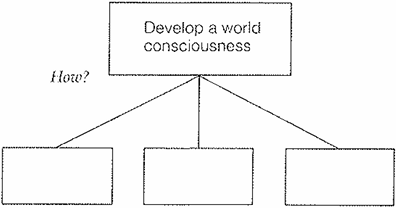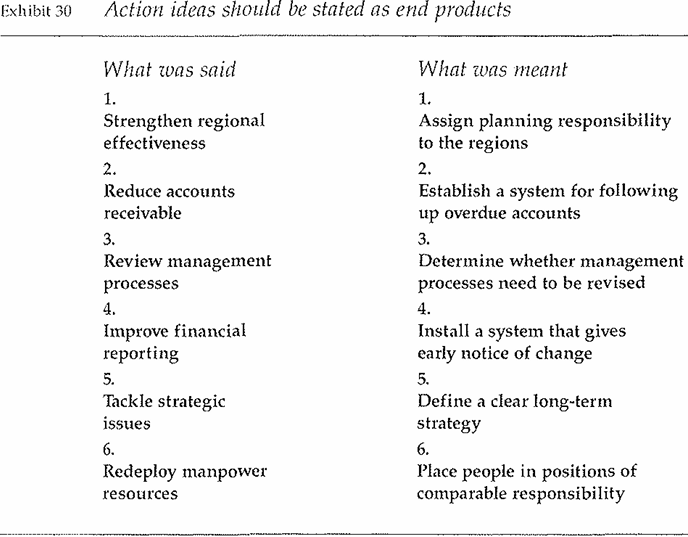

Grammar


Tenses


Present

Present Simple

Present Continuous

Present Perfect

Present Perfect Continuous


Past

Past Continuous

Past Perfect

Past Perfect Continuous

Past Simple


Future

Future Simple

Future Continuous

Future Perfect

Future Perfect Continuous

Passive and Active


Parts Of Speech


Nouns

Countable and uncountable nouns

Verbal nouns

Singular and Plural nouns

Proper nouns

Nouns gender

Nouns definition

Concrete nouns

Abstract nouns

Common nouns

Collective nouns

Definition Of Nouns


Verbs

Stative and dynamic verbs

Finite and nonfinite verbs

To be verbs

Transitive and intransitive verbs

Auxiliary verbs

Modal verbs

Regular and irregular verbs

Action verbs


Adverbs

Relative adverbs

Interrogative adverbs

Adverbs of time

Adverbs of place

Adverbs of reason

Adverbs of quantity

Adverbs of manner

Adverbs of frequency

Adverbs of affirmation


Adjectives

Quantitative adjective

Proper adjective

Possessive adjective

Numeral adjective

Interrogative adjective

Distributive adjective

Descriptive adjective

Demonstrative adjective


Pronouns

Subject pronoun

Relative pronoun

Reflexive pronoun

Reciprocal pronoun

Possessive pronoun

Personal pronoun

Interrogative pronoun

Indefinite pronoun

Emphatic pronoun

Distributive pronoun

Demonstrative pronoun


Pre Position


Preposition by function

Time preposition

Reason preposition

Possession preposition

Place preposition

Phrases preposition

Origin preposition

Measure preposition

Direction preposition

Contrast preposition

Agent preposition


Preposition by construction

Simple preposition

Phrase preposition

Double preposition

Compound preposition


Conjunctions

Subordinating conjunction

Correlative conjunction

Coordinating conjunction

Conjunctive adverbs


Interjections

Express calling interjection


Grammar Rules

Preference

Requests and offers

wishes

Be used to

Some and any

Could have done

Describing people

Giving advices

Possession

Comparative and superlative

Giving Reason

Making Suggestions

Apologizing

Forming questions

Since and for

Directions

Obligation

Adverbials

invitation

Articles

Imaginary condition

Zero conditional

First conditional

Second conditional

Third conditional

Reported speech


Linguistics

Phonetics

Phonology


Semantics


Pragmatics

Linguistics fields

Syntax

Morphology

Semantics

pragmatics

History

Writing

Grammar

Phonetics and Phonology


Reading Comprehension

Elementary

Intermediate

Advanced
Make the Wording Specific
المؤلف:
BARBARA MINTO
المصدر:
THE MINTO PYRAMID PRINCIPLE
الجزء والصفحة:
99-7
2024-09-15
275
In a cause-effect hierarchy, you will be able to say about each grouping of ideas, starting at the bottom, "I do these specific things to achieve the above effect, I do the next higher group of things to achieve the next above effect," etc. Each of the points must be mutually exclusive front its neighbor- i.e., no overlaps-and each grouping of points must be collectively exhaustive in relation to its summary point.
To judge whether the grouping is collectively exhaustive, the effect must be so specifically stated that it implies an end product you can hold in your hand. In other words, you can't say; "l do these three things so that I can improve profits," because a 10 percent improvement and a 2 percent improvement are both an improvement in profits, but the steps you would need to take to achieve each would differ.
To be both clear to the reader and useful to yourself in checking your thinking, the point should say something like, "I do these three things to improve profits by 10 percent by January 15." The specificity of the statement permits you to judge whether the steps you have grouped together underneath would in fact bring about the end result.
You will not always, of course, have a clear numerical goal as your end product. But there will always be some tangible way to judge that the step has been completed. A useful technique is to visualize a real person actually taking the action, so that you can see what he will have in his hand, and then word the action to reflect this end product. By that criterion, this sentence is almost pure gibberish:
A world consciousness must be developed through which every individual
realizes his role as a member of the world community
What does that mean we are expected to do? How will we know when we have done it? Can you pick out someone who has “developed a world consciousness" from someone who has not? If you cannot, you do not know what the author actually means. Worse, you cannot work out the steps you would have to take to make it happen-i.e., you could not answer the question "How?" to fill in the boxes shown below. In that sense, the statement has no intellectual value, even though one might argue it has an emotional value.

The problem is worse, of course, if you are presenting a whole series of steps in vague language. Then it becomes almost impossible to work out what people are trying to get you to do. For example:
To reduce the chance that conflict will turn to confrontation rather than healthy debate and consideration of issues on their merits, the Task Force must be able to:
Handle a variety of personal attitudes
Build favorable rapport with company personnel
Develop good interviewing skills
Plan and conduct interviews effectively
Learn to gain agreement on suggestions while maintaining an objective posture
What is it actually the Task Force must do to ensure healthy debate, etc.? If they do these five things, what will they accomplish? There are no visualizable end products here, no points at which you could definitely judge that you have accomplished what the step intended. And without knowing what the final objective is meant to be, you cannot judge that these five steps will in fact achieve it.
The only way around this kind of problem is to force yourself to look for an end product or cutoff point that will let you know when a step is completed, and word the point in those terms. To illustrate, Exhibit 30 shows examples of typically vague wordings, each translated into an end-product statement of what the author actually meant.

You can see that each translation is easier to comprehend because it brings an image to mind. Being able to see an image makes a document much more interesting to read. More important for the writer, the end-product orientation stimulates further thinking.
For example, in number one, once I assume I have assigned the planning responsibility to the regions, I see them preparing annual plans. I am then stimulated to think whether anything else is needed along with these plans to accomplish some higher goal, if there is one.
- How will I know they are producing the right kind of plan?
- What happens when the plans come back to me?
Perhaps, in addition to assigning responsibility, I need to establish a system for set ting annual planning objectives. And maybe I need to set up a planning review group to manage the whole planning process.
By contrast, if I visualize "strengthen regional effectiveness," what do I see? What does regional effectiveness look like? Nothing specific enough to indicate the obvious need for another step.
You may have noted in Exhibit 29 on page 98 that an action can serve as both a cause and an effect in a structure. Consequently, all steps should be written so that they imply an end product, regardless of their level in the hierarchy. Without the effect specifically stated, you cannot make a judgment that you have included all the steps. For example, here is a set of steps recommending a new process:
1. Identify and pursue overdue accounts receivable
2. Age large and medium accounts regularly
3. Send reminders based on amount and time outstanding
4. Pursue overdue accounts
5. Settle long outstanding accounts more frequently at director level
6. Use a collection agency where clearly appropriate
The assumption is that if the company carries out the steps grouped below, it will be able to achieve the objective stated above. But the objective is unclear (how exactly do you "pursue" an overdue account?), as are most of the steps. When questioned, the person who wrote it said, "It's very simple," and drew this chart.

"The accounts are overdue anywhere front l to 6 months, and anywhere from $100 to $'100,000. What I want is this:
1. Those that are 1 month overdue, don't do anything with, just have Accounting send a bill in the normal way
2. Those that are 2 months overdue, have Accounting send a note
3. Those that are 3 months overdue, have the salesmen call in person
4. Those that are 4 months overdue, have the Directors call
5. The rest send to a collection agency"
"Oh, I see what I'm saying," he said, and produced this:
Reduce accounts receivable
1. Sort the accounts by age and amount
2. Assign responsibility for collection by seriousness
- Accounting
- Directors
- Salesmen
- Collection Agency
Certainly, this is clearer; but the point at the top is still not right: if you get one bill paid, you have reduced accounts receivable. And neither of the steps will lead directly to getting a bill paid. So what will the company accomplish if it does these two things? What will it have in its hand at the end, so to speak? Probably a system for following up overdue accounts.
Now we come to the real value of the end-product wording as a guide to your thinking. The minute you see that what you are trying to get the company to do is to establish a system for following up overdue accounts, you can look at the two steps critically to determine whether they are sufficient to constitute a system. I would think at the very least you also need some sort of follow-up step, perhaps "Instruct the sales force to stop calling on the chronic nonpayers."
I can't emphasize too strongly the necessity of wording action ideas to reflect an end product. Unless you force this discipline on your wording, you simply cannot make an objective judgment that you have included in your steps all that should be there.
Sometimes people believe they can get around this need for specific wording by stating the actions as questions, since answering each question will produce an end product. That approach only adds a layer of complexity to your thinking, since you still have to visualize the end products and make sure that they are desirable.
For example:
In order that both internal and external stakeholders will see the general benefits from a strategic alliance and thus sponsor it (stakeholder blessing), the following questions need to be addressed:
1. Are relevant ownership groups convinced that the venture will be desirable from their stockholder viewpoint?
2. What will be the effects on the company's reputation and the responses of the market?
3. Are key members of the top management teams likely to be willing to pursue the venture-by seeing how the alliance will not be a threat to their own power and careers?
4. To the extent that the alliance could represent a threat to any person or group, how can they be convinced to work toward the alliance's subsequent success?
5. How will customers, suppliers, existing alliance partners, financiers, and competitors react?
The easiest way to check whether these questions make sense as an approach is to imagine yourself sending out five different minions to gather the information for you. Each of the five comes back and deposits his answer on your desk. What you get is five different things, not necessarily related.

Instead, visualize yourself starting over with just one not overly bright minion to help you, limited time, and no budget. What is the most efficient way to direct that person's time, so that at the end you will have a plan for getting stakeholders to see the benefits of a strategic alliance? Would you not do this:

Now anyone can understand the process, and step one is already finished. You need only send the minion out to fill in the second box, since you can't do the third until the second is done.
Again, the easiest way to clarify your thinking when dealing with action ideas is to visualize yourseli actually taking the action, and word the step in terms of the end product you will have in your hand when you finish.